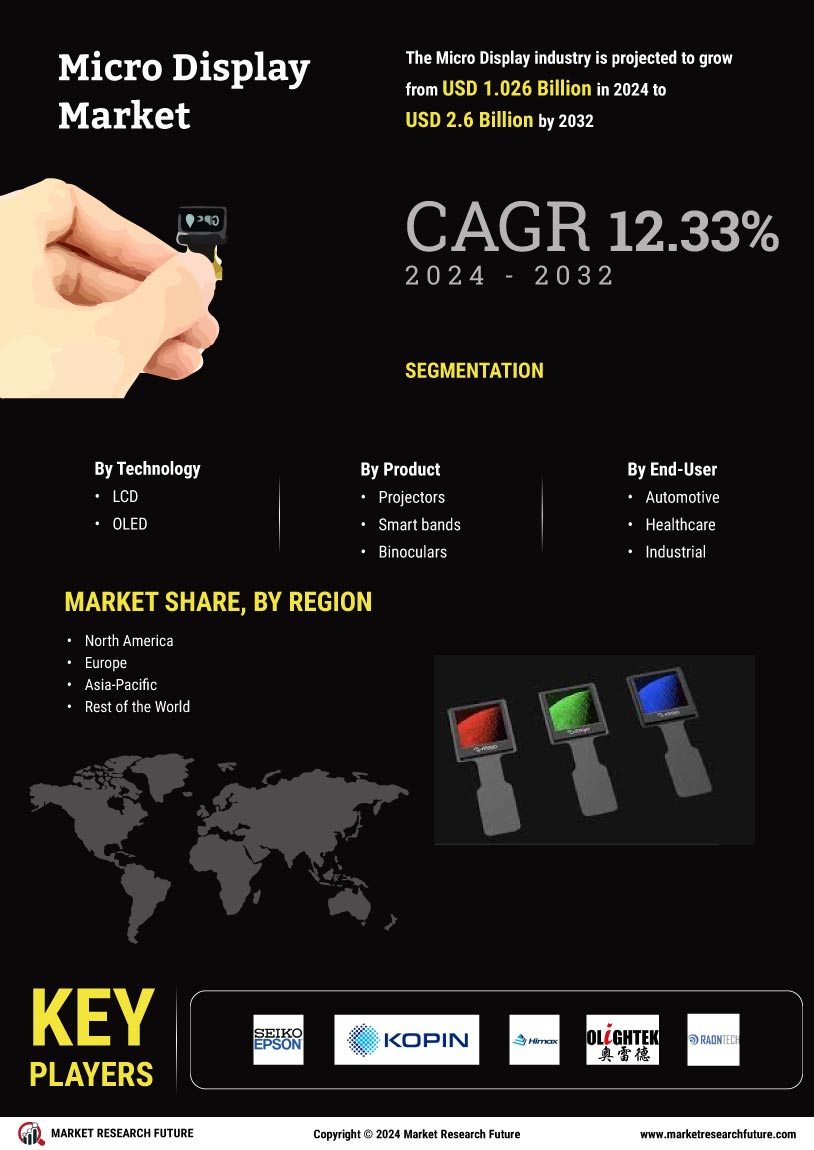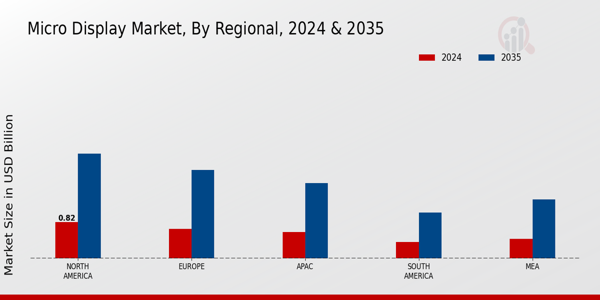Market Growth Projections
The Global Micro Display Market Industry is poised for substantial growth, with projections indicating a market value of 8.5 USD Billion by 2035. This growth trajectory is supported by a compound annual growth rate of 10.2% from 2025 to 2035. The increasing demand for high-resolution displays across various sectors, including consumer electronics, automotive, and healthcare, underscores the market's potential. As technological advancements continue to emerge, the industry is likely to witness further innovations that enhance display quality and efficiency. The anticipated growth reflects the industry's adaptability and responsiveness to changing consumer preferences and technological advancements.
Advancements in Display Technology
Technological advancements play a crucial role in shaping the Global Micro Display Market Industry. Innovations in micro LED and OLED technologies have led to improved display quality, energy efficiency, and form factor versatility. These advancements enable manufacturers to create displays that are not only smaller but also deliver superior brightness and contrast. As the industry evolves, the potential for applications in sectors such as automotive, military, and consumer electronics expands significantly. The ongoing research and development efforts are likely to drive the market's growth, with projections indicating a compound annual growth rate of 10.2% from 2025 to 2035, ultimately enhancing the overall market landscape.
Rising Demand for Wearable Devices
The Global Micro Display Market Industry experiences a notable surge in demand for wearable devices, such as smart glasses and augmented reality headsets. These devices utilize micro displays to enhance user experience by providing high-resolution visuals in a compact form factor. As of 2024, the market is valued at approximately 2.92 USD Billion, reflecting the growing consumer interest in wearable technology. This trend is expected to continue, driven by advancements in display technology and increasing applications in various sectors, including healthcare and entertainment. The integration of micro displays in wearables is likely to propel the industry forward, fostering innovation and expanding market reach.
Emerging Applications in Healthcare
The healthcare sector is witnessing a growing integration of micro displays in medical devices, which significantly impacts the Global Micro Display Market Industry. Applications such as surgical displays, diagnostic imaging, and telemedicine require high-resolution visuals for accurate data interpretation. The increasing demand for portable and efficient medical devices drives the need for advanced micro display technologies. As healthcare providers seek to improve patient outcomes through innovative solutions, the adoption of micro displays is expected to rise. This trend not only enhances the functionality of medical devices but also contributes to the overall growth of the market, reflecting the industry's adaptability to evolving healthcare needs.
Growing Adoption in Automotive Sector
The automotive sector increasingly adopts micro displays for various applications, including heads-up displays and infotainment systems. This trend significantly influences the Global Micro Display Market Industry, as manufacturers seek to enhance driver safety and user experience through advanced visual technologies. The integration of micro displays in vehicles allows for real-time information display, navigation assistance, and entertainment options, thereby improving overall functionality. As the automotive industry continues to innovate, the demand for high-quality micro displays is expected to rise, contributing to the market's growth trajectory. This adoption could further solidify the industry's position, with projections indicating a market value of 8.5 USD Billion by 2035.
Increased Investment in AR and VR Technologies
Investment in augmented reality (AR) and virtual reality (VR) technologies is a significant driver for the Global Micro Display Market Industry. As businesses and consumers increasingly recognize the potential of AR and VR applications, the demand for high-performance micro displays rises correspondingly. These technologies find applications in gaming, training simulations, and remote collaboration, necessitating displays that offer high resolution and low latency. The growing interest from various sectors, including education and healthcare, suggests a robust market expansion. As the industry evolves, the integration of micro displays into AR and VR devices is likely to enhance user experiences, further propelling market growth.

























